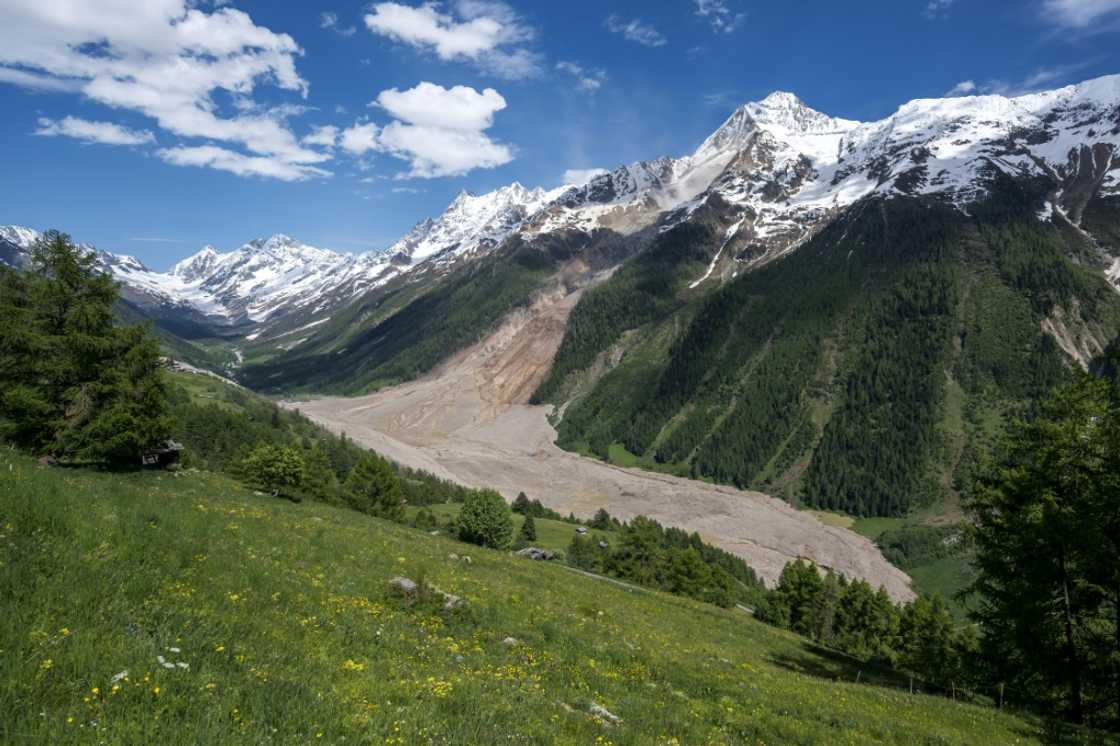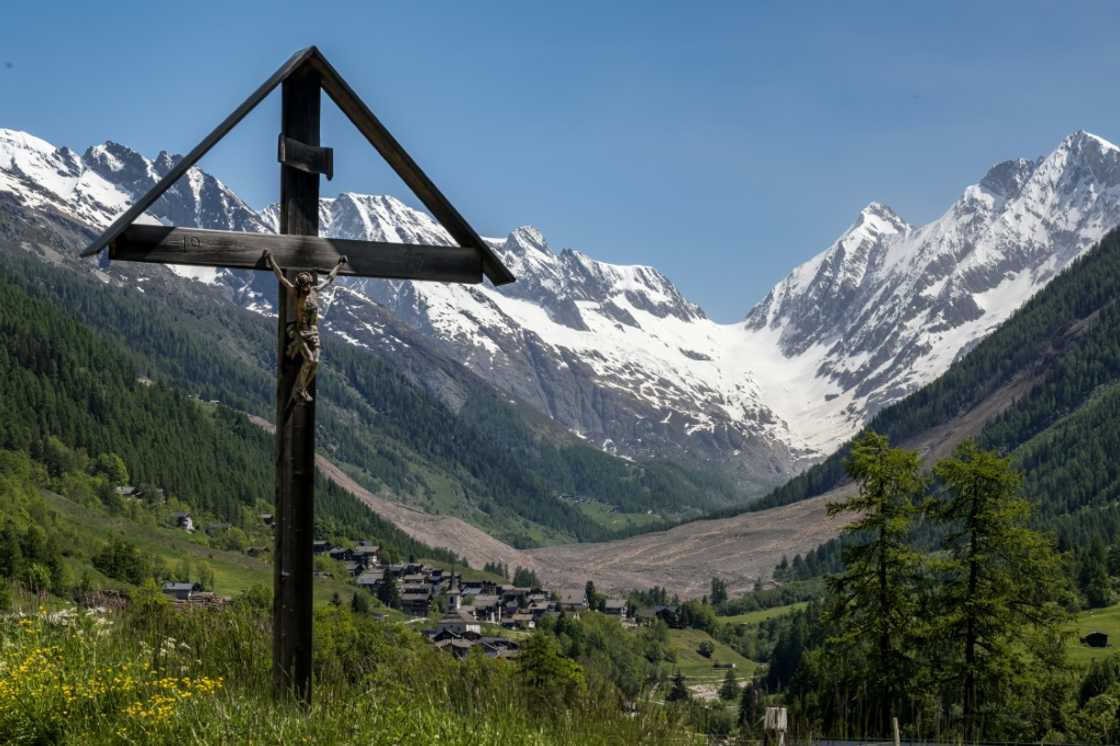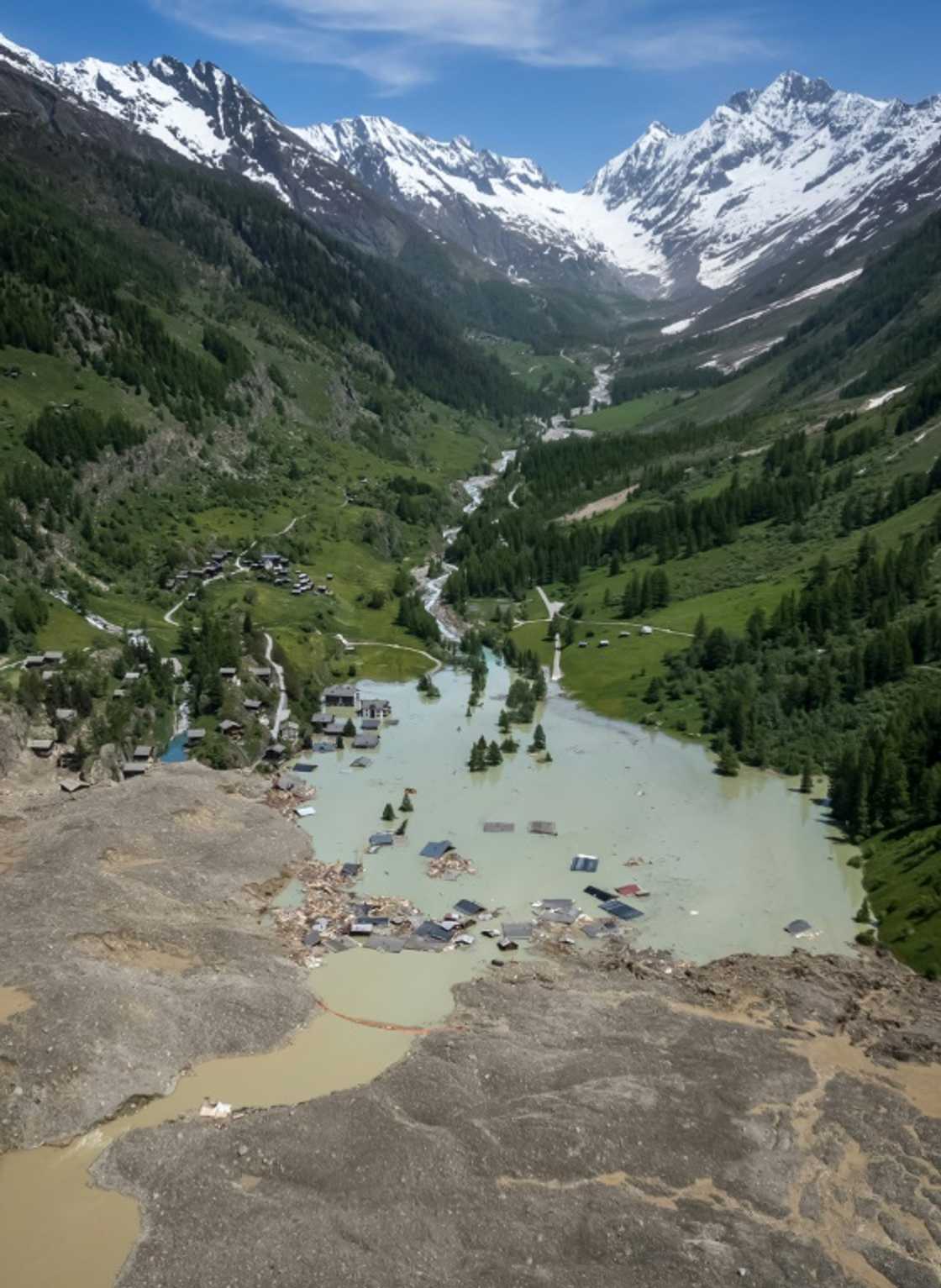
The sudden disintegration of Switzerland’s Birch Glacier, which led to the destruction of a village, has been deemed an unparalleled catastrophe potentially costing several hundred million dollars, according to the Swiss Insurance Association on Monday.
The SIA trade group stated in a release that this constitutes "a major catastrophe with a scope and effect on the impacted community that is nearly without precedent."
It is not yet possible to give a "precise estimate of the extent of the damage", it said.
However, Eduard Held, the association's specialist in damage caused by natural hazards, expects "a loss of several hundred million francs (dollars)", the statement said.
On Wednesday, the Birch glacier collapsed, sending scree, ice and mud hurtling down into the Lotschental valley in Switzerland's southern Wallis region.
The disaster destroyed most of Blatten, which had been home to 300 people and was evacuated the week before due to the impending danger.
Houses which escaped the landslide have become submerged in an artificial lake as the two-kilometre-long barricade of debris blocks the river Lonza in the valley floor.
Missing person search resumed
"Our first thought is the victims who are currently in a very difficult situation. Private insurers are striving to provide them with assistance as best they can and without unnecessary formalities," said Held.
The Birch Glacier lay beneath the 3,342-meter (10,965-foot) tall Kleines Nesthorn summit.

In the fortnight before the glacier's collapse, a series of falls from the mountain dumped three million cubic metres of rock onto the ice surface.
This added more weight, and considering the glacier was on a steep incline, it eventually yielded dramatically, cascading down into Blatten below in the valley.
Experts stated that it was premature to establish a direct connection to climate change, yet they informed AFP that the melting permafrost within the fissures of the rocks probably contributed to the instability of the mountain.
A 64-year-old male, thought to have been in the hazardous area when it happened, is still unaccounted for.
The operation restarted on Monday within a designated zone, involving mountain experts and canine handlers who were transported to the site via air. Additionally, a mechanical excavator was brought in for assistance.
Early warnings
At a conference in Geneva, Celeste Saulo, who leads the World Meteorological Organization — the UN body responsible for monitoring weather, climate, and water issues — warned that this calamity serves as a stark reminder of our changing global climate.

"However, beneath the surprise, it carries a hopeful message," she said additionally.
"Early action avoided human losses. From understanding risk to effective forecasts, communication and evacuation, early warnings and early action work. They save lives."
Maarten van Aalst, the director-general of the Royal Netherlands Meteorological Institute, said Blatten "reminded us that we need the early warning systems even more in a changing climate".
"Even in the best-prepared countries there is still work to do and there's new threats to counter in this day and age and that early warnings play a critical role," he said.

Posting Komentar